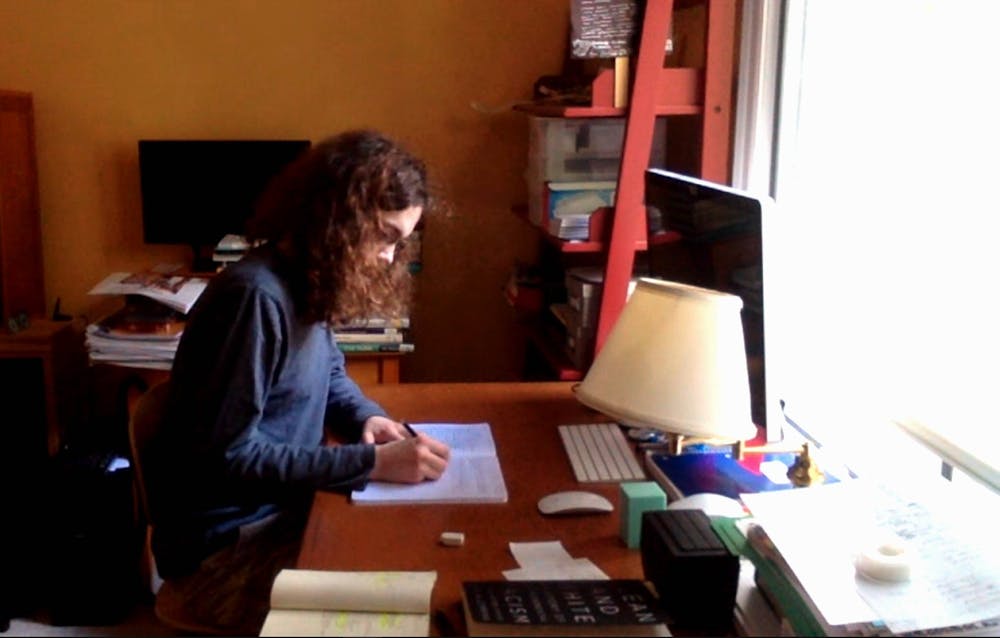Alison Brenner, the parent of a kindergartner in the CHCCS system, said her daughter’s teachers have done a good job at adjusting to remote learning. But she said it has been a struggle to balance working full time while helping her daughter with classes, and being so involved with her daughter’s work has created an interesting dynamic.
“I think the kids themselves have been really adaptable and it's pretty amazing,” she said. “But the dynamic of 'parent as teacher' has probably been the most stressful for her. She ends up getting frustrated with me, and I get frustrated with her, but it’s a learning process.”
Disproportionate challenges
Knight said for some students, getting to learn at home without the social environment of school has proved to be less stressful than being in the classroom. But for a lot of students, the isolation brought on by remote learning has caused mental health challenges.
“I think everyone has found it more difficult to learn and to understand the material, and people have been getting increasingly fatigued,” Knight said.
Researchers with George Mason University, Loyola University Chicago and the University of South Carolina conducted a nationwide survey of more than 2,100 teachers in the summer of 2020 to look at these mental health impacts. They found that 46 percent of teachers reported seeing higher levels of student mental health concerns — including anxiety, depression, trauma and grief — than they did before the pandemic.
The survey also found that teachers serving marginalized student populations encountered more student wellness concerns, but had fewer resources to address them. According to the Urban Institute, students of color are more likely to live in poverty, lack internet access and live in crowded conditions, all of which can make remote learning more difficult.
“The loss, especially for Black and brown students, has just been tremendous,” Gloria Thomas, co-chairperson of the Chapel Hill-Carrboro NAACP Education Committee, said.
The Chapel Hill-Carrboro NAACP created the Learning Bridge Program, a tutoring program targeted at Black and Latinx students in the Elliott Woods and Chase Park housing communities, in response to these remote learning concerns. The program aims to address racial opportunity gaps in education that have been worsened by the pandemic.
“We knew Black and brown students would be impacted the most, and the impact is going to be long-range,” Dianne Jackson, a member of the Chapel Hill-Carrboro NAACP who helps lead the Learning Bridge program, said. “But it’s not anything that can’t be helped if we address it systematically.”
Returning to the classroom
The CHCCS Board of Education voted at its March 4 meeting to return to a hybrid, in-person model of instruction starting on March 22. Brenner said she’s ready and excited for her daughter to return to the classroom due to reassurance that it will be safe.
To get the day's news and headlines in your inbox each morning, sign up for our email newsletters.
But while in-person classes are starting back up, there are still concerns over the long-term impacts that remote learning has caused. Jones said overall academic performance is down compared to before the pandemic. Additionally, Thomas said she’s concerned about drop-out rates among middle and high schoolers, as well as the impact that this decreased academic performance could have over time.
“Losing kids because they’re going to drop out of school, that’s my biggest fear,” Thomas said.
Jones said the prospect of these impacts may be daunting, but it’s nothing educators can’t help students overcome.
“We as educators would never hold back and say, 'We can't do this,'” he said. “Because we can bounce back. You wouldn't be in this profession if you couldn’t.”
@KaylaGuilliams
@DTHCityState | city@dailytarheel.com



